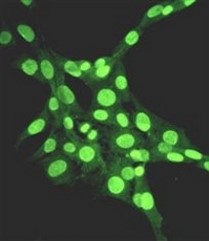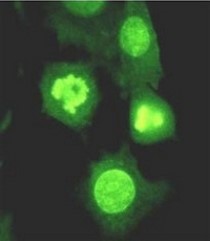DEOXYRIBONUCLEASES
Research Interests
Extracellular nucleases, which occur in most body fluids of vertebrates, predominantly belong to a family of Ca2+ and Mg2+ (Mn2+)-dependent endonucleases, which was named by its first identified member, Deoxyribonuclease I (DNase I / DNASE1). So far three further members beside DNASE1 were found: DNASE1-like 1-3 (DNASE1L1-3).
Our group characterizes the physiological functions of these nucleases by employing gene-knockout mouse models. Especially the functions of DNASE1, which is highly expressed by glands lining the gastro- and urogenital tract and DNASE1L3 (DNase γ), which is expressed by macrophages and activated B-cells, are of our major interest. Both nucleases occur in serum of mammals and our experiments hint to their contribution in the suppression of anti-nuclear autoimmunity, which is characteristic for a human disease called Systemic Lupus Erythematosus (SLE). Both enzymes display a complementary substrate specificity – DNASE1 efficiently degrades protein-free DNA whereas DNASE1L3 preferentially hydrolyzes protein-complexed DNA (chromatin) – and appear to cooperate in the destruction of exogenous (microorganisms) and endogenous (primary or secondary necrotic cells) DNA. Impairment of these processes might lead to a prolonged and chronic exposure of the immune system to DNA-antigens leading to an increased probability for the breakdown of self-tolerance towards nuclear antigens. Indeed, SLE is regarded as a multigenetic disease caused by defects which impair the removal of dying cells and cell debris in the context of defects leading to a deregulated and hypersensitive immune system.
In summary, we intend to elucidate the role of extracellular nucleases in the removal of nuclear cell debris released under physiological and pathological conditions (necrosis) and the consequences resulting from an impairment of these processes.

Contact
Dr. Markus Napirei
Ruhr-Universität Bochum
Institut für Anatomie
Abteilung für Anatomie und Molekulare Embryologie
- Tel: +49 (0)234 32 23164


Detection of anti-nuclear (chromatin) autoantibodies (ANA) in the serum of an ANA-positive mouse by indirect immunofluorescence using NIH3T3 fibroblasts.


